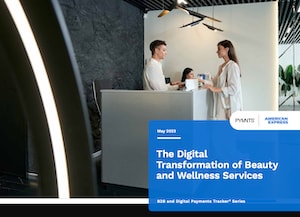April 25, 2023
6 Simple Ways to Innovate and Stay Ahead of the Curve

Scott Steinberg
AKeynoteSpeaker.com
Since when does innovation have to be time-consuming or difficult? Although game-changing technologies and big scientific breakthroughs tend to dominate media headlines, as I point out in Fast >> Forward: How to Turbo-Charge Business, Sales, and Career Growth, slight shifts in thinking are all it often takes to fast-track business growth and success. Likewise, simple changes in packaging, presentation or operating strategy can often produce big wins for businesses of every size.
While revolutionary changes often spring to mind first, the truth is that evolutionary changes can also move the needle significantly for an organization—and can be achieved more frequently with far less expenditure and effort. So when it comes to planning an innovation strategy, in addition to thinking big, don’t forget to make a point to think small as well. As each of the following insights and strategies for fueling creativity and forward momentum prove, all it often takes to go from stuck to success is just a passing change in perspective.
1. Reuse existing resources in new and novel ways.
Ask yourself: How can you repurpose or reuse existing capabilities, insights and solutions in clever and eye-catching new combinations? For example, when young adults in Australia stopped drinking one major soft drink provider’s carbonated beverages as often as they had in the past, and started getting together more often online than in real life, the company knew it needed to radically reinvent its strategy to connect with them both online and off. But the company decided not to take out millions in TV or radio advertising, or try and cook up all sorts of crazy new flavors, which it knew wouldn’t fix the bigger underlying problem.
Instead, it decided to bridge the gap between the digital and physical worlds by printing the 150 most popular Australian first names on soda bottles it was already manufacturing and selling—and, via cost-effective social, online and mobile media programs—invited citizens to share them and strike up conversation. Within a few months, it had successfully blanketed the nation with its messaging and increased consumption among young adults by double digits. The campaign proved so clever and cost-effective that it later came to the U.S. and other territories in a big way as well.
Takeaway: Look for areas in your business or marketing strategy where you can iterate vs. reinvent and make small changes that can help you repurpose or repackage products, services or solutions to be more compelling. Simple pivots can serve as springboards to new opportunities.
2. Reposition yourself to better meet customers’ needs.
The sport of golf has recently struggled to attract younger audiences who are frequently strapped for time, money and attention. However, many full-service entertainment centers—which combine high-tech driving ranges with event spaces and restaurants—have helped reignite skyrocketing public interest in the game. But the secret to these facilities’ success hasn’t been investing in smart viewscreens and micro-chipped balls. It’s simply been introducing a business model that makes the golfing experience shorter, more social and more accessible to everyone. In essence, these venues are simply helping people get to the fun parts of the game sooner, and giving golfers the freedom to decide exactly how they want to experience the sport—not to mention access to a slew of other on-site attractions. Just by reimagining play facilities as one-stop family entertainment centers, these businesses have found success by putting a fresh spin on a formula that country clubs already pioneered decades back.
Takeaway: Slight tweaks to presentation and messaging that render products, services or solutions more compelling to your target audience can produce huge windfalls for your business. Think about who your ideal client is, the challenges or needs that they most frequently encounter, and how you can provide a solution that best speaks to their concerns.
3. Rethink your core value proposition.
In recent years, many public libraries have struggled to attract new visitors. Happily, many more are also enjoying a new lease on life today just by rethinking the role that they can play in their community. For example, a ways back, one facility in the Netherlands was struggling. Attendance was down, memberships were plummeting and residents complained that the venue felt boring and outdated. Happily, all staff had to do to reverse the trend was survey members to find out what would interest them, and borrow a page from the hospitality business to help reinvent the branch. Removing piles of untouched stacks, library leaders instead reclaimed underused space in the building and repurposed it as a cafe, restaurant, co-working center, video gaming facility and event space where local artists and musicians were invited to perform. Within months, the facility went from struggling to breaking all-time performance records.
"While revolutionary changes often spring to mind first, the truth is that evolutionary changes can also move the needle significantly for an organization -- and can be achieved more frequently with far less expenditure and effort."
Takeaway: Ask yourself: What other ways could you be providing value for your audience? While many firms tend to focus on single business models or solutions, there are often many ways to reuse resources in clever combinations, as well as more alternative approaches to doing business that you could be capitalizing on.
4. Embrace the wisdom of the crowd.
Radically multiply the number of resources, insights and capabilities available to you, and you can radically multiply the speed at which you can solve any given challenge. That’s why more and more organizations are turning to the concept of open innovation—sourcing ideas and input from the general community—as a means of quickly upscaling their capabilities.
Likewise, in addition to applying this outside-in approach to invitation, many other firms are also finding success by going the inverse route, and taking an inside-out approach to advancement. This involves finding ways to integrate custom solutions that they’ve developed—e.g. data sharing or collaboration tools they’ve built—with other firms’ innovation pipelines. Either approach to collaboration can be an effective tool for sending your prospects soaring.
Takeaway: Customers are repeatedly proven to be the No. 1 most reliable source where modern businesses can turn for successful and innovative new ideas, so give them more opportunities to speak up and share. Similarly, it pays to take a more cooperative and less competitive approach to doing business: Teaming up with others in your space can help you quickly fast-track results.
5. Take a more creative approach to execution.
Getting ahead in business today isn’t about being a genius. Rather, it’s about being more clever and ingenious. For instance, one major global insurance carrier was looking to find ways to reduce accidents, minimize customer costs and get drivers to behave more safely behind the wheel. Amazingly for a business operating in such a highly-regulated and competitive field, one of its most effective solutions wasn’t to roll out a worldwide educational initiative, training program or public awareness campaign. Rather, it was to create and launch a downloadable app for smartphones which turned driving into a game. In effect, the better you behave on the road, not only the more points you can score, but the better the real-world insurance policy discount you can win.
Takeaway: Simple solutions exist for even the most complex problems. Don't be afraid to get creative, and don't hesitate to experiment. One of the easiest ways to innovate in business is to find a method for doing in one step what's currently taking you several.
6. A six-step formula for finding success.
That said, if you’re looking to innovate more rapidly and cost-effectively, a simple formula for accelerating and building growth or competitive advantage—F. A. S. T. E. R.—can help put you on the fast-track to success.
- F – Focus: Study an opportunity closely, learning everything you can about the challenge before you.
- A – Analyze: Assess potential approaches you can take to rise to the occasion and the potential resources you’ll need to accomplish the task.
- S – Strategize: Weigh possible risks and rewards associated with each angle of attack. Then determine which strategies for moving forward are most practical and favorable, and develop an action plan and steps you need to take to achieve your goal.
- T – Turbo-Charge: Seek out and apply time- and effort-saving tools, technologies and techniques that can help you streamline your strategies for getting ahead and minimize the costs (both in terms of finances and opportunity) required to deploy them.
- E – Execute: Engage and put your strategic plan into action.
- R – Revise: Review the results of your efforts and use the insights gained to quickly enhance and improve future tactics—or pivot to more effective approaches.
For example: One of today’s largest social networks began as a time- and resource-strapped startup that lacked the bandwidth to translate its site to other languages en masse. But with most of its user base living overseas, it needed to find a way to quickly scale and better serve foreign markets. So rather than invest in professional services, which it researched and realized could be slow and pricey to implement, it instead asked its user community for help. Within just one day of doing so, over 4,000 fans had helped it translate the site into French, with more languages to quickly follow as it expanded this operating model to other territories.
Takeaway: Rather than do all the heavy lifting yourself, sometimes it pays to outsource, crowdsource, and/or find ways to share the load. Similarly, odds are you're not the first person to encounter most common business problems: Many time-saving tools and technologies exist that are designed to help you streamline efforts and blow right past these challenges.
As you can see, innovating your way to success doesn’t have to be exceptionally challenging or difficult. Many times, finding winning solutions is simply a function of the attitude you adopt, and how you choose to approach working through any given task.
Photo: Getty Images








